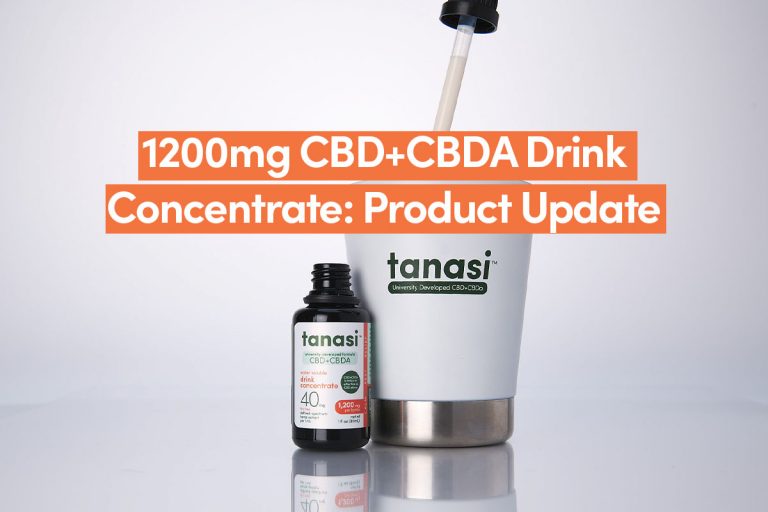CBD and Nausea: What You Need to Know About This Natural Supplement.

Posted on September 19th, 2022
Emerging research suggests that CBD may provide relief for nausea induced by chemotherapy and other conditions. If you are searching for reliable information on CBD and nausea, you have come to the right place. One advantage CBD has is it doesn’t cause the “high” that comes with marijuana. Tetrahydrocannabinol or THC is the cannabinoid in the cannabis plant that causes the “high.” This article provides information on CBD and nausea, and what you should know before trying it
CBD and Nausea: What’s Nausea?
Nausea is usually a discomfort in the stomach accompanied by an urge to vomit. A person suffering from nausea may feel a heaviness, tightness in the stomach, or a feeling of indigestion that doesn’t go away easily. Nausea can come from many different medical conditions. In fact, it is one of the most common medical symptoms. It may not be a sign of a serious problem most of the time.
But there are times when nausea might be a symptom of a serious health condition that needs your immediate attention. For example, nausea is a common symptom of pregnancy, stomach flu, and chemotherapy. It may also simply be a side effect of a medication. Not all cases of nausea cause a person to actually vomit.
Why Do We Get Nauseous?
Nausea is your body’s highly evolved defensive mechanism. It helps the body quickly get rid of harmful substances you may have ingested. If you allow a harmful substance to continue its course through the digestive system, the pathogen can enter the bloodstream and cause more harm to your system. If the cause of nausea is a minor infection of the upper digestive system, expelling the content of the stomach before it crosses the duodenum helps prevent pain and discomfort.
A negative past experience with a certain food or beverage can induce nausea once again. In fact, the sight or smell of such food can trigger nausea. Dopamine and apomorphine act directly on the receptors located in the brain’s fourth ventricle – which is a cavity near the brainstem. Activating these brain receptors causes nausea. There are some conditions such as inflammation in the gut that stimulate the brain to directly induce nausea. Even though nausea is unpleasant, the human race might not have survived without it.
The Mechanism Behind Nausea
The exact mechanism of nausea or emesis can be divided into three components. First, the afferent neurons will send inputs to the central nervous system or CNS to stimulate nausea and vomiting. The CNS then receives, recognizes, and centrally processes the signals. Then, the efferent neurons will carry signals from the CNS that lead to the coordinated respiratory, gastrointestinal, and abdominal muscle actions of nausea and vomiting. There are two medullary centers of vomiting in the CNS. These are the sensory CTZ or chemoreceptor trigger zone and the integrative center. The CTZ is in the medulla of the human brain. It has a blood-brain barrier to detect toxins that are circulating in the blood as well as cerebrospinal fluid (CSF).
It is sensitive to a large number of circulating emetic agents such as intravenous copper sulfate, morphine, and certain metabolic emetic agents. The CTZ doesn’t induce vomiting itself. Instead, it relays stimuli to the integrative vomiting center to produce the actual sensation of emesis. The integrative vomiting center coordinates activities of the neural structures to produce the vomiting reflex.
 Cancer and Nausea
Cancer and Nausea
Even though nausea is often a side effect of some cancer treatments like chemotherapy, it can also be a direct symptom of cancer. For example, if a person has a tumor in some part of his/her bowel, it may lead to nausea and vomiting. When a person has tumors in the lining of the abdominal cavity (peritoneum), it can prevent food from digesting properly. This can lead to nausea and vomiting over time. Additionally, a tumor in the brain can increase the pressure in the brain and induce nausea and vomiting.
Chemotherapy Nausea
Nausea and vomiting are common symptoms with some cancer treatments like chemotherapy. The vomiting center in the brain is responsible for controlling nausea and vomiting. The reason for chemotherapy-induced vomiting and nausea is the activation of the CTZ or chemoreceptor trigger zone by the chemotherapy agents circulating in the blood of the patient. In fact, the sight and smell of chemotherapy can be causes of anticipatory nausea & vomiting. They may occur before the treatment to patients who have experienced nausea in prior cycles.
In fact, it can happen within 24 hours of beginning the treatment or later. If nausea and vomiting occur within 24 hours, it is “acute.” On the other hand, if nausea and vomiting occur later, it is “delayed.” Because it is so common, CBD and nausea is a pair that many feel is worth more research.
The main reason chemo causes nausea and vomiting is that it activates the CTZ or chemoreceptor trigger zone. The radiation particles are harmful to the body and would normally be expelled from the body. Nausea and vomiting are the mechanisms to expel these harmful radiation substances from the body.
Preventing Chemo Nausea
Your healthcare provider will prescribe anti-nausea medications to relieve the symptoms of nausea. There are many pharmaceutical medications such as Aprepitant (Emend), Dolasetron (Anzemet), Granisetron (Kytril), and Ondansetron (Zofran). But most of these medications come with numerous side effects. There are highly effective alternative medicines for nausea and vomiting. CBD is one of the most effective alternative medications for this condition.
CBD and Nausea: What’s CBD?
Cannabidiol is one of the many chemical compounds naturally occurring in the cannabis plant. There are more than a hundred chemical compounds in the cannabis plant. THC or tetrahydrocannabinol is the most prevalent chemical compound in the plant. CBD is the second most prevalent chemical compound. It has many potential health benefits and doesn’t make a person high. CBD happens to be quite effective at treating nausea.
The natural chemical compounds in the cannabis plant are called cannabinoids. Cannabinoids in plants are phytocannabinoids while in the human body they are called endocannabinoids. These cannabinoids interact with specific receptors throughout the central nervous system to regulate how cells communicate with each other. The main goal of cannabinoids is to bring the body back to homeostasis whenever there is something wrong.
 Can CBD Prevent Nausea?
Can CBD Prevent Nausea?
Yes, according to early evidence. Studies show that CBD helps prevent nausea and vomiting by interacting with serotonin receptors in the brain. Serotonin influences how a person feels. In fact, the hormone is responsible for maintaining your mood and a general sense of well-being. The latest human studies reveal that combining CBD and THC can provide better relief. The American Cancer Society includes CBD on its list of drugs that help manage nausea and vomiting at home after chemotherapy. It helps patients where conventional anti-nausea and vomiting drugs don’t work. Full-spectrum CBD is the best cannabinoid for nausea.
Side Effects of CBD
CBD is usually one of the safest alternative supplements out there. But it also carries some risks for some patients. Almost everyone tolerates CBD well, but it can cause minor side effects such as dry mouth, diarrhea, drowsiness, and lower appetite. The most important thing is to follow the right dosage to prevent many of these side effects.
Final Thoughts
Hopefully the above information on CBD and nausea has answered any questions you may have had. CBD is one of the most effective alternative options for chemotherapy-induced nausea and vomiting in cancer patients. The most important thing is to look for a high-quality CBD product from a reliable supplier like Tanasi. Whether you try it because of chemotherapy nausea or general nausea, consult a doctor first. They will be able to offer advice on proper dosing and potential drug interactions.

 Cancer and Nausea
Cancer and Nausea Can CBD Prevent Nausea?
Can CBD Prevent Nausea?



